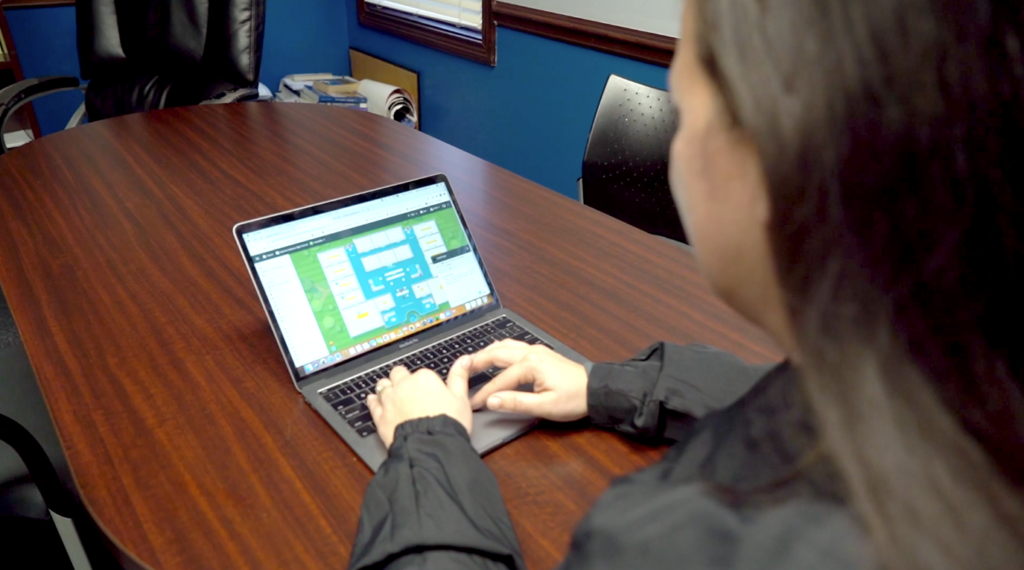Virtual Learning: Balance & Flexibility

In the wake of the COVID-19 pandemic, over 1.2 billion students around the world were no longer learning in traditional classrooms. With advancement in technology, online learning is here to stay even with students back in the classroom and on campus. Options Indiana has led the way with virtual learning, serving students in 134 Indiana school districts.
Virtual learning was well on the rise before the coronavirus outbreak, with millions of students across the United States already engaged in some form of distance learning.
Flexibility was, and continues to be, a significant driving force behind the growing presence of online learning. But how are students learning to manage their time successfully in a new learning environment with no teachers to oversee their day-to-day?
Here at Options Schools, flexibility and balance play an integral role in our educational approach. Whether or not your student has completely or partially shifted to virtual learning, here’s how you can help them better manage their time and achieve a healthy and flexible work-school balance!
Is Virtual Learning Right for Your Student?
The flexibility of online education makes it possible for students of varying academic backgrounds, learning styles, abilities, and needs to thrive in a virtual classroom. From academically advanced students to those who struggle in certain subject areas, each can receive the resources they need that a traditional classroom can’t always provide.
Online learning may be a more suitable option if your student has health or safety concerns or requires individualized support from a parent at home. Students who are transitioning from a homeschooling environment or want to develop their independent study skills can also benefit from virtual learning.
If you’re interested in learning more about how to make your student successful and make the most out of virtual learning, members of the Options Indiana team are here to help.
How Flexible is Virtual Learning?
Many online learning programs require students to be in their seats by a certain time. This doesn’t always work for the students who participate in extracurricular activities and can’t pursue their education in a traditional 8-to-3 timeframe.
However, there are more flexible online education opportunities out there. At Options, our middle and high school students use our virtual program differently. Some of our students work towards their diploma online in the evenings, while student-athletes and musicians who train during the day take advantage of the virtual classroom in the mornings or at night. Students are expected to work for 15 hours per week, but how they fulfill that requirement over the course of seven days is up to them.
A flexible virtual learning program can accommodate any student’s needs and provide them with a personalized learning plan ‒ but without proper time management and school-life balance, the student may struggle to thrive in even the most flexible virtual learning environment.
Commit & Stay Proactive
There is indeed a greater level of independence in online education. But with this greater sense of control comes the potential to slack off, get distracted, or fall behind. Families need to devote time and energy to making the remote learning environment work for their children.
Commit to keeping your student on track and doing everything you can do to help them thrive as a virtual learner. The more proactive you are as a parent, the more proactive your student will be as a student.
Minimize Distractions
It’s easy for any student to get distracted by other siblings, pets, technology, and other goings-on at home. Even the most disciplined students sometimes need help to stay motivated throughout their studies.
Make yourself available to answer your student’s questions, encourage them, or redirect them. Help your student to stay on track by opening and maintaining the lines of communication with their teachers.
Have your students show you their work throughout the day. Encourage them to make progress and get all their work completed by asking them questions and offering help.
Structure Your Student’s Day
Parents don’t necessarily need to hover over their children during school hours, but preserving structure throughout the day is essential to their continued focus and performance.
Structure is essential to a healthy school-life balance. With that said, keep your child’s unique learning style in mind.
Some students focus better in the morning or thrive in the evenings. Your child may focus and study best in a straight 6-hour block of time, or they may benefit by breaking up their day with breaks and other activities.
Maintaining social interaction should also be incorporated into your student’s schedule. With the Sococo program, our teachers and students are able to maintain interaction, socialization, and work virtually side-by-side for maximum productivity. The Options team will be able to support your student’s needs, regardless of their schedule. We’ll work closely with them to set up a good and efficient structure so you don’t have to stress and worry.
Tips for School-Life Balance
Virtual learning may provide more flexibility than a traditional 8-to-3 classroom, but it can also interfere with a student’s school-life balance and well-being if boundaries do not exist.
Every student, no matter their abilities and needs, requires downtime. A student’s academic performance can start to falter if they have to study late into the evenings or make up for lost time on the weekends. Without giving their brains time to recuperate, students can become exhausted, less productive, and struggle to focus during school hours.
Let’s dive into helpful tips to help your student maintain a healthy school-life balance!
Map Out Your Student’s Schedule
What does your student’s schedule look like? If they work, train, or participate in extracurricular activities during the day, when is the best window of time for them to study?
If their schedule varies each day during the week, you’ll want to help them carve and map out a schedule that devotes ample time to schoolwork.
Help them create a weekly to-do list on Sunday or first thing on Monday morning. Layout the projects, deadlines, and assignments for the week and carve out enough time to devote their energy to these tasks.
Help Your Student Stay Nourished & Energized
Set a mealtime routine. Make sure your student eats a balanced breakfast and lunch during the school day. Provide them with healthy snacks if they’re on a busy schedule.
It may not always be possible with your busy schedule, but aim to have a couple of shared family meals each week. A family meal will give your student time to step away from their studies, connect with you, your spouse, and siblings, unwind, and nourish themselves.
Encourage Recreation & Downtime
Designate breaks during the day for your student to enjoy activities they love. Try to minimize their recreational screen time and encourage them to participate in other activities, like exercise, reading, crafting, or playing outside.
Keep an eye on their stress and energy levels. Positive pep-talks can go a long way for their motivation, but sometimes sleep and downtime are what a stressed and busy student needs to refresh themselves.
Set Up a Designated Study Area
No matter what your student’s virtual learning schedule ends up looking like, commit to having them complete their studies in a designated learning zone.
Whether it’s in a home office, their room, or a separate area of the home, make sure their learning zone is free of distractions and has a stable Internet connection and all the resources and supplies they’ll need.
When it’s time for recreation activities, encourage your child to do them outside of their study area or home classroom. Having physical boundaries within the home can help promote a better and more d defined school-life balance.
Achieve a Balanced & Flexible Virtual Learning Environment
Options Schools have long integrated virtual learning opportunities for students across Indiana. Now more than ever, we recognize the growing need for balance and flexibility in the virtual classroom.
With so much still up in the air as far as schools reopening during the COVID-19 pandemic, we believe it is essential to instill balance and flexibility in students. If you’d like to learn more about virtual learning in Indiana and how our online education program works, we encourage you to contact us today!

